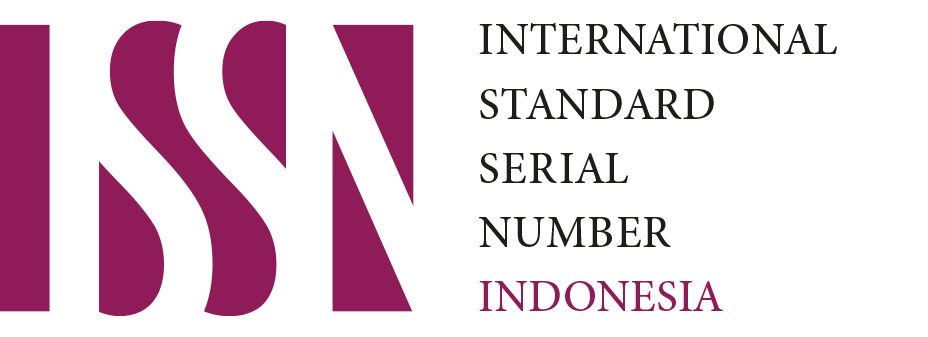Personal Archive Management with Digital Curation Concept on Students' Smartphones
Downloads
Bckground of the study: Digital curation activities are necessary for organizing digital archives to be accessible to the present and future. The problem in this research is that information and library management (MIP) students who have previously received records management (MRA) courses through digital curation have not fully implemented digital curation in managing digital archives.
Purpose: This study aims to find out how MIP students curate digital archives of their photos and documents on the smartphone.
Method: The method used in this research is a qualitative descriptive approach and technique. Data used in interviews with five MIP students as informants.
Findings: The results show that information in conducting digital curation activities such as digital object evaluation and discussion, life cycle and digital object management on an ongoing basis, and keeping them accessible, each individual has a unique and different way.
Conclusion: Factor needs, memories, and usefulness of digital archive become a more determining factor in students in digital curation.
Downloads
Al-Omar, M., & Cox, M.A. (2016). Scholars research related personal information collections: A study of education and health researchers in a Kuwaiti University. Aslib Journal of Information Management, Vol 68 No. 2, 155-173. https://doi.org/10.1108/AJIM-04-2015-0069
Alsaleh, M., Alomar, N. & Alarifi, A. (2017). Smartphone users: understanding how security mechanisms are perceived and new persuasive methods. PLoS ONE, 12(3), 1-35.
Binus University. (2014). In-depth interview (wawancara mendalam). Diakses dari https://qmc.binus.ac.id/2014/10/28/in-depth-interview-wawancara-mendalam/
CNBC. (2014). Most Americans don't secure their smartphones. Diakses dari https://www.cnbc.com/2014/04/26/most-americans-dont-secure-their-smartphones.html
Cushing, A.L. (2010). Highlighting the archives perspective in the personal digital archiving discussion. Library Hi Tech, 28(2), 301-312.
E-Marketer. (2013). Smartphone penetration doubles in Indonesia. Diakses dari https://www.emarketer.com/Article/Smartphone-Penetration-Doubles-Indonesia/1010102
Gifary, S & Iis K. N. (2015). Intensitas Penggunaan Smartphone terhadap Perilaku Komunikasi. Jurnal Sosioteknologi, 14(2), 170-178.
Gifary, S & Iis K. N. (2015). Intensitas Penggunaan Smartphone terhadap Perilaku Komunikasi. Jurnal Sosioteknologi, 14(2), 170-178.
Hamdi, A. S, & Bahruddin, E. (2014). Metode penelitian kuantitatif aplikasi dalam pendidikan. Yogyakarta: Deepublisher.
Harris. P, Rebecca,L &Liu, Yan Quan. (2012). Is data curration education at library and information science schools in North America adequate?. New Library World, 113(11/12), 598-613.
Istijanto. (2010). Riset sumber daya manusia: cara praktis mengukur stres, kepuasan kerja, komitmen, loyalitas, motivasi kerja, dan aspek-aspek kerja karyawan lainnya. Cetakan Keempat. Jakarta:Gramedia Pustaka Utama.
Kementerian Riset, Teknologi dan Pendidikan Tinggi. (2017). Smartphone rakyat Indonesia. Dalam Siaran Pers No. 02/SP/HM/BKKP/I/2017. Diakses dari https://www.ristekdikti.go.id/smartphone-rakyat-indonesia-2/
Lazorchak, B. (2013). Four easy tips for preserving your digital photographs. Perspectives on personal digital archiving. National Digital Information. Infrastructure And Preservation Program Library of Congress
Mansour, E. (2015). Use of smartphone apps among library and information science students at South Valley University, Egypt. The Electronic Library,34(3), 371-404.
Molloy, L. (2015). Performances, preservation, and policy implications: Digital curation and preservation awareness and strategy in the performing arts. New Review of Information Networking, Vol. 20, 179-193. DOI: 10.1080/13614576.2015.1115297
Otopah, Francis Osae dan Perpetua Dadzie. (2013). Personal information management practices of students and its implications for library services. Aslib Proceedings: New Information Perspectives, 65(2), 143-160. DOI. 10.1108/00012531311313970
Poole, A. H. (2016). The conceptual landscape of digital curation. Journal of Ducumentation, 72(5), 961-986.
Prayoga, M.F. Setiawan, I., Aji, F. (2014). Decoding penonton terhadap iklan layanan masyarakat imunisasi wajib bagi balita tahun 2013 di televisi. Jurnal Publika Budaya, 3, 45-49.
Sari, P.K. & Candiwan. (2014). Measuring information security awareness of Indonesian smartphone users. Telkomnika, 12(2), 493-500. DOI 10.12928/TELKOMNIKA.v12i2.2015.
Shih, Dong-Her et al. (2008). Security aspects of mobile phone virus: a critical survey. Industrial Management & Data Systems, 108(4), 478-494.
Sinn, D., Sujin, K., Sue, Y.S. (2017). Personal digital archiving: influencing factors and challenges to practices. Library Hi Tech, 35(2), 222-239.
Stevens, J. R. (2013). Digital curration's dilemma: contrasting different uses, purposes, goals, strategic, and values. The International Journal Of Technology, Knowledge, and Society, 9, 1-11.
To¨yssy, S. & Helenius, M. (2006). About malicious software in smartphones. Journal in Computer Virology, 2(2), 109-19.
Williams, P., John, J.L., Rowland, I. (2009). The personal curation of digital objects a lifecycle approach. Aslib Proceedings: New Information Perspectives,61(4), 340-363.
Xiao Xie., Sonnenwald, D.H., Fulton, S. (2015). The role of memory in document re-finding. Library Hi Tech, 33(1), 83-102.
Yakel, E. (2007). Archives and manuscripts digital curation. OCLC System & Service International Digital Library Perspectives, 23(4), 335-340.
Zaveri, P. (2015). Digital disaster management in libraries in India. Library Hi Tech, 33(2), 230-244. https://doi.org/10.1108/LHT-09-2014-0090
Zhang, Xiao Jua, Zhen Li, dan Hepu Deng. (2017). Information security behaviors of smartphone usersin China: an empirical analysis. The Electronic Library, 35(6), 1177-1190.
Record and Library Journal by Unair is licensed under a Creative Commons Attribution-ShareAlike 4.0 International License.
1. The journal allows the author to hold the copyright of the article without restrictions.
2. The journal allows the author(s) to retain publishing rights without restrictions
3. The legal formal aspect of journal publication accessibility refers to Creative Commons Attribution Share-Alike (CC BY-SA).
4. The Creative Commons Attribution Share-Alike (CC BY-SA) license allows re-distribution and re-use of a licensed work on the conditions that the creator is appropriately credited and that any derivative work is made available under "the same, similar or a compatible license”. Other than the conditions mentioned above, the editorial board is not responsible for copyright violation.


 57201398420
57201398420

























